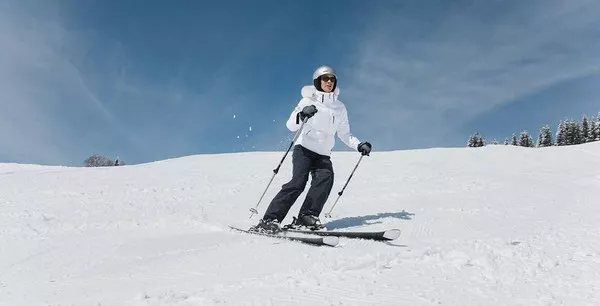Skate skiing, an exhilarating form of cross-country skiing, blends athleticism with finesse, offering participants a unique way to navigate snowy landscapes. Unlike classic cross-country skiing, which involves a straightforward back-and-forth movement, skate skiing employs a dynamic side-to-side technique resembling ice skating or rollerblading. This sport demands balance, endurance, and coordination, making it a favorite among outdoor enthusiasts seeking a full-body workout in winter wonderlands.
Understanding the Technique
Skate skiing is characterized by a fluid, gliding motion propelled by the skier’s poles and leg movements. The technique involves pushing off with the edges of the skis at an angle, generating forward momentum. Each stride is akin to a lateral bound, with the skier shifting weight from one ski to the other, using a coordinated arm swing for balance and power.
Key to mastering skate skiing is the concept of “skating on skis.” This involves a V-shaped pattern of movement, where the skier pushes outwards and then glides inward, similar to ice skating. This dynamic motion minimizes friction and maximizes speed, enabling skiers to cover long distances efficiently.
Equipment and Gear
Skate skiing requires specialized equipment designed to enhance performance and control. The skis used are typically shorter and stiffer than traditional cross-country skis, enabling quicker turns and efficient propulsion. Skate ski boots are lightweight, providing ankle support while allowing for a full range of motion essential for the skating technique.
Poles used in skate skiing are longer than those used in classic skiing. They have a unique ergonomic design, with straps that secure around the wrists to facilitate powerful pole pushes. The length of the poles is tailored to the skier’s height, allowing for optimal leverage and rhythm.
Furthermore, skate skiing demands attention to detail when it comes to selecting appropriate clothing. Breathable, moisture-wicking layers are essential to regulate body temperature during vigorous activity in cold conditions. Ski-specific jackets, pants, gloves, and hats provide insulation without hindering movement, ensuring comfort and performance on the snow.
Fitness and Training
Skate skiing is renowned for its physical benefits, engaging multiple muscle groups simultaneously. It strengthens the legs, particularly the quadriceps, hamstrings, and glutes, which power the skating motion. Additionally, the upper body—arms, shoulders, and core—plays a crucial role in maintaining balance and propelling forward momentum with each pole plant.
Training for skate skiing involves a combination of cardiovascular endurance, strength training, and technique refinement. Endurance workouts such as long-distance skiing sessions build stamina and aerobic capacity, while strength training, focusing on leg and core exercises, enhances power and stability. Technique drills, including balance exercises and interval training, hone the specific movements required for efficient skate skiing.
Where to Skate Ski
Skate skiing can be enjoyed in a variety of settings, from meticulously groomed trails in Nordic ski centers to backcountry terrain in national parks and wilderness areas. Many ski resorts offer designated skate skiing trails alongside classic ski tracks, catering to skiers of all skill levels.
In regions with ample snowfall, skate skiing opportunities abound during winter months. Popular destinations for skate skiing include the Nordic ski meccas of Scandinavia, the mountainous regions of North America and Europe, and even urban parks transformed into winter wonderlands after snowfall.
Benefits Beyond Fitness
Beyond the physical rewards, skate skiing offers a profound connection with nature and a sense of accomplishment. Gliding through pristine snow-covered landscapes provides a serene escape from urban life, fostering mental well-being and reducing stress. Moreover, mastering the intricate technique of skate skiing cultivates discipline and focus, translating into improved performance in other sports and activities.
Getting Started
For those intrigued by skate skiing, embarking on this exhilarating journey begins with proper instruction. Many ski resorts and outdoor centers offer lessons tailored to beginners, focusing on basic technique and safety. Learning from experienced instructors accelerates skill development and minimizes the risk of injury, ensuring a positive and enjoyable experience on the snow.
Investing in quality equipment suited to individual needs is also essential for a successful skate skiing venture. Renting equipment initially is a cost-effective option, allowing beginners to familiarize themselves with the sport before committing to purchasing gear.
Conclusion
Skate skiing is more than a sport; it’s an immersive experience that celebrates the beauty of winter and the joy of movement. From the intricacies of technique to the exhilaration of gliding effortlessly across snowy landscapes, skate skiing captivates both body and mind. Whether seeking a challenging workout or a tranquil escape, skate skiing offers a unique perspective on winter recreation, enriching lives and forging lasting connections with the natural world.

